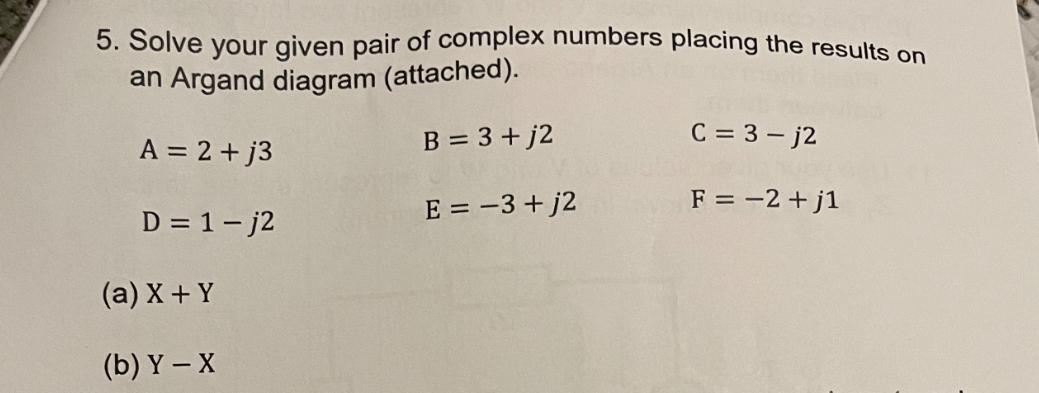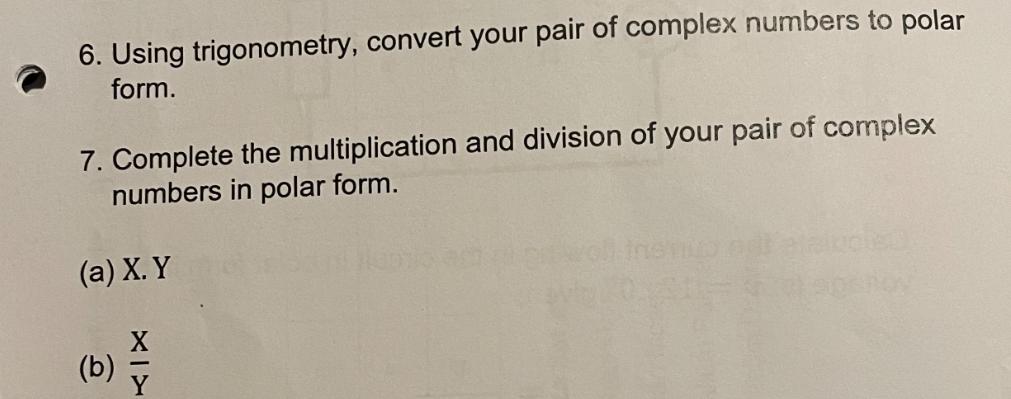Question
5. Solve your given pair of complex numbers placing the results on an Argand diagram (attached). A = 2 + j3 B = 3



5. Solve your given pair of complex numbers placing the results on an Argand diagram (attached). A = 2 + j3 B = 3 + j2 C = 3-j2 E = -3+j2 F = 2+ j1 D= 1-j2 (a) X + Y (b) Y - X 6. Using trigonometry, convert your pair of complex numbers to polar form. 7. Complete the multiplication and division of your pair of complex numbers in polar form. (a) X. Y XY (b) / 7. Complete the multiplication and division of your pair of complex numbers in polar form. (a) X. Y (b) 8. Using trigonometry, convert your answers to rectangular (Cartesian) form.
Step by Step Solution
There are 3 Steps involved in it
Step: 1

Get Instant Access to Expert-Tailored Solutions
See step-by-step solutions with expert insights and AI powered tools for academic success
Step: 2

Step: 3

Ace Your Homework with AI
Get the answers you need in no time with our AI-driven, step-by-step assistance
Get StartedRecommended Textbook for
Income Tax Fundamentals 2013
Authors: Gerald E. Whittenburg, Martha Altus Buller, Steven L Gill
31st Edition
1111972516, 978-1285586618, 1285586611, 978-1285613109, 978-1111972516
Students also viewed these Mathematics questions
Question
Answered: 1 week ago
Question
Answered: 1 week ago
Question
Answered: 1 week ago
Question
Answered: 1 week ago
Question
Answered: 1 week ago
Question
Answered: 1 week ago
Question
Answered: 1 week ago
Question
Answered: 1 week ago
Question
Answered: 1 week ago
Question
Answered: 1 week ago
Question
Answered: 1 week ago
Question
Answered: 1 week ago
Question
Answered: 1 week ago
Question
Answered: 1 week ago
Question
Answered: 1 week ago
Question
Answered: 1 week ago
Question
Answered: 1 week ago
Question
Answered: 1 week ago
Question
Answered: 1 week ago
Question
Answered: 1 week ago
Question
Answered: 1 week ago
Question
Answered: 1 week ago
Question
Answered: 1 week ago
View Answer in SolutionInn App



